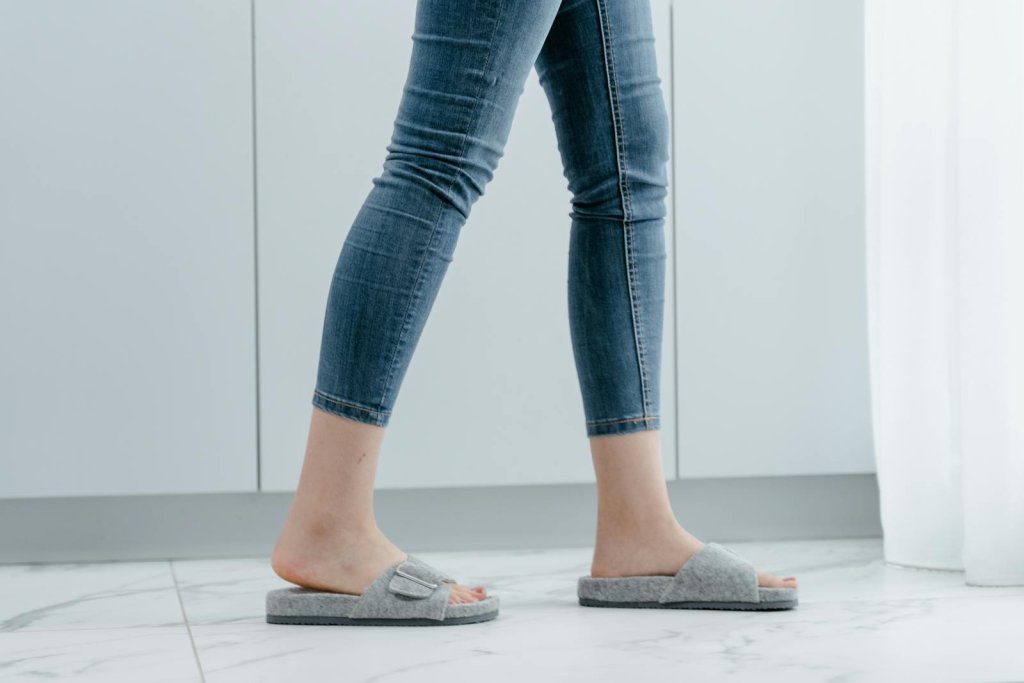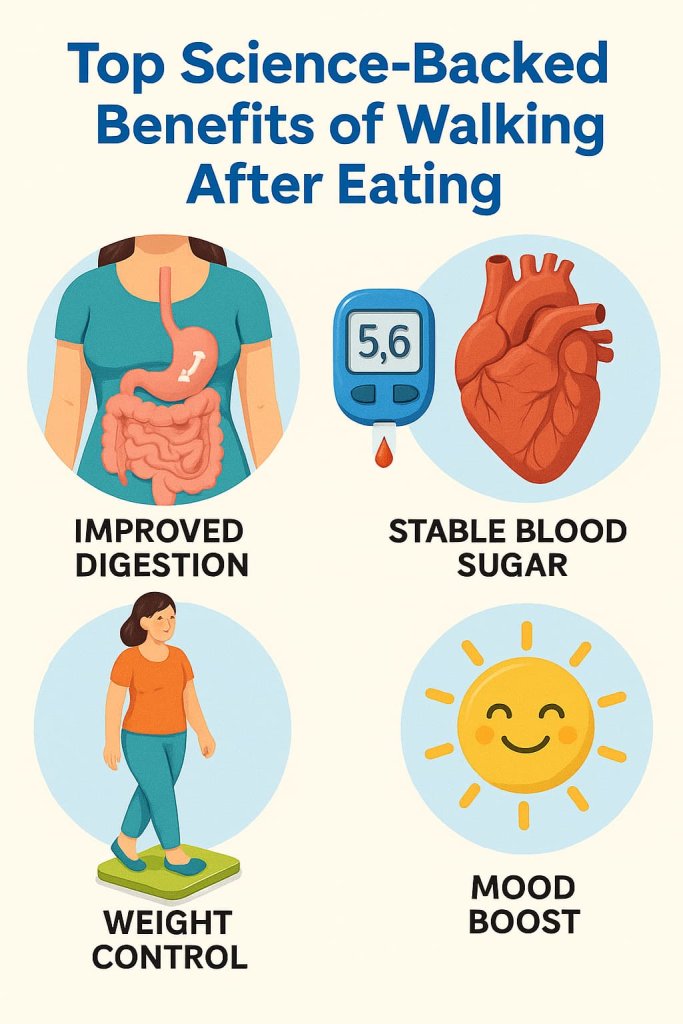Walking after eating is one of the simplest lifestyle changes you can make for better digestion, improved blood sugar control, stronger heart health, and an overall sense of well-being.
It’s more than just a casual stroll—it’s a scientifically proven micro-habit that delivers macro-level health results. You don’t need a gym membership, expensive gear, or extra time—just a few minutes after each meal can transform how your body feels and functions.

Understanding why and how to walk after eating can help you gain all the benefits while avoiding common mistakes.
Why Walking After Eating Works
When you walk after a meal, you activate postprandial activity—a period where your digestive system and muscles work in harmony. Here’s what happens:
- Glucose Control – Muscles absorb glucose from your bloodstream, preventing blood sugar spikes that can happen after eating.
- Digestive Support – Gentle movement stimulates peristalsis (wave-like contractions in your digestive tract), moving food through more efficiently.
- Circulatory Boost – Walking increases blood flow, delivering nutrients and oxygen to your body faster.
- Mood & Energy – Even short bouts of light movement trigger the release of endorphins and serotonin, helping you feel more relaxed and focused.
A Cleveland Clinic study found that just 2–5 minutes of light walking post-meal measurably reduces blood sugar spikes. News-Medical (2025) reports that 10–15 minutes after each meal can outperform a single 30-minute daily walk for metabolic health.
Top Science-Backed Benefits of Walking After Eating

1. Improves Digestion & Reduces Bloating
After eating, digestion demands energy and blood flow. Walking helps speed up this process and prevents food from sitting heavily in your stomach.
Example: If you often feel bloated after dinner, a 10-minute stroll can significantly reduce that heavy feeling.
2. Helps Regulate Blood Sugar
When you walk, your muscles use glucose for energy—pulling it out of your bloodstream. This keeps your blood sugar more stable, reducing insulin spikes and crashes.
Best for: People with type 2 diabetes, insulin resistance, or anyone looking to maintain steady energy.
3. Supports Heart Health
Frequent short walks after meals improve circulation, lower post-meal blood pressure, and can reduce cardiovascular risk over time.
Pro Tip: Walking outdoors in fresh air after dinner also promotes relaxation, which benefits heart health.
4. Assists in Weight Management
Walking after meals increases daily calorie expenditure without feeling like exercise. Over weeks and months, this helps prevent gradual weight gain.
5. Boosts Mood & Mental Clarity
Light walking post-meal releases mood-enhancing chemicals and reduces the drowsiness many feel after eating—often called the “afternoon slump.”
How to Do Post-Meal Walking the Right Way
| Step | Action | Why It Works |
|---|---|---|
| 1 | Wait 5–15 minutes (for heavy meals) | Gives digestion a head start |
| 2 | Keep a gentle pace (3 mph / 5 km/h) | Prevents cramps and reflux |
| 3 | Walk for 10–15 minutes | Optimal time for blood sugar and digestion |
| 4 | Walk after each main meal | Builds a consistent habit |
| 5 | Choose a safe, comfortable route | Encourages daily consistency |
Potential Downsides (and Fixes)
- 1. Stomach discomfort → Wait a few minutes after large meals before walking.
- 2. Cramps → Avoid brisk walking or steep inclines immediately after eating.
- 3. Low blood sugar in diabetics → Monitor levels and carry a snack if using insulin or glucose-lowering meds.
Walking Before vs After Meals
| Aspect | Before Meal | After Meal |
|---|---|---|
| Blood sugar | Minimal change | Significant reduction |
| Digestion | No direct effect | Improves motility, reduces bloat |
| Energy | Boost before eating | Reduces post-meal fatigue |
| Weight | Burns stored fat | Burns calories from the meal |
Real-World Examples
Office Workers: Walking inside the building or in the parking lot after lunch prevents mid-afternoon tiredness.
Parents: A quick family walk after dinner doubles as quality time and a health boost.
Elderly Adults: Gentle walking after each meal helps maintain mobility and digestive comfort.
Extra Tips for Success
- Pair your walk with phone calls or podcasts to make it more enjoyable.
- If outdoors isn’t an option, walk around your home or on a treadmill.
- Set a recurring reminder on your phone for post-meal movement.
FAQs
1. Can walking after eating cause weight loss?
Yes, over time, it contributes to calorie burn and better digestion, supporting weight control.
2. How soon should I walk after eating?
For light meals—right away. For heavier meals—wait 10–15 minutes.
3. Can it help with acid reflux?
Gentle walking can, but avoid brisk walking or bending forward.
4. Is walking after dinner good for sleep?
Yes, it helps regulate blood sugar and relax the body, aiding sleep.
5. Can I replace it with chores?
Yes—any light movement like cleaning or gardening provides similar benefits.
6. Is “fart walking” real?
Yes—this light 5–15 minute walk after eating can relieve bloating and improve gut comfort.
Conclusion
Walking after eating isn’t just exercise—it’s a science-backed, cost-free health upgrade. From digestion to heart health, weight control to mood, this small daily habit delivers big results. Start with just a few minutes after your next meal, stay consistent, and watch your health improve one step at a time.
References
Healthline – Walking After Eating
Verywell Health – Walking After Eating
Cleveland Clinic – Walking After Meals
